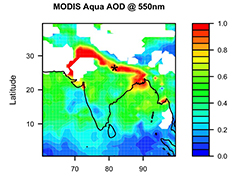Bias and Error in Econometric Analyses Using Spatial Data
Researcher: Jennifer Burney (GPS)

The increasing availability of high-resolution geocoded data on key outcomes (e.g., incomes) and potential drivers of these outcomes (e.g., variation in environmental factors) has prompted analysis of their relationship at finer and finer spatial scales. However, to date little attention has been given to issues of aggregation and measurement error in spatial econometric analysis, and how they affect estimation bias and efficiency.
This project aims to open a new line of methodological inquiry of key interest to the broader social science community by asking: What are the implications for analysis and inference when using spatial data with different error structures?
Practically, this means two things: first, when the high-resolution data allows the researcher choice over the level of aggregation at which the analysis is conducted, some types of measurement error could counterintuitively favor a more aggregated level of analysis. Second, when measurement error is spatially heterogeneous, non-independent, and not fully specified, construction of proper standard errors (at different scales of aggregation) will require special treatment.
This empirical work will 1) develop rules of thumb for understanding the optimal level of spatial aggregation for a given analysis, based on available knowledge of the measurement error; and 2) develop tools for improving inference when using high-resolution gridded or point data, including proper construction of standard errors.
This will provide social science researchers with actionable tools and guidance on using high-resolution spatial data in their work. For example, these tools will help researchers choose the optimal scale of analysis, and understand how to correct for measurement error in analyses involving climate and other gridded data.

